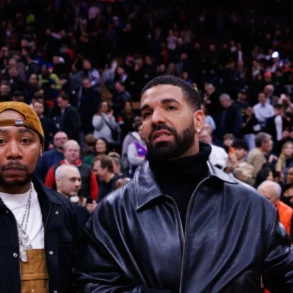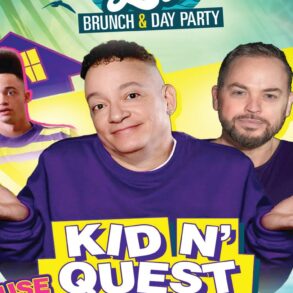Mazes, Deepgrooves, various tracks and albums, etc
Selected Works is a weekly (usually) newsletter by the Te Whanganui-a-Tara, Aotearoa (Wellington, New Zealand) based freelance music journalist, broadcaster, copywriter and sometimes DJ Martyn Pepperell, aka Yours Truly. Most weeks, Selected Works consists of a recap of what I’ve been doing lately and some of what I’ve been listening to and reading, paired with film photographs I’ve taken + some bonuses. All of that said, sometimes it takes completely different forms.
HOUSEKEEPING:
Over the last couple of weeks, I’ve been in the final stages of granular editing on two major feature stories. I suspect they’ll be my last big ones for the year. I’m finishing up 2024 as I mean to continue in 2025, and that is very heartening on my end. However, while I’ve been in this flurry, I’ve neglected a bunch of stuff. So, today, I’m going to devote this newsletter mostly to attempting to “catch up”- whatever that even means anymore.
Here’s one of my many prayers for 2025: can someone in the film & television world please step up and provide Kingston, Jamaica’s Mr Jordan Chung, aka Time Cow, with more soundtrack/sound design work? To get a better sense of why I’m throwing this idea out there, check out ‘Duppy 1+2 (Precious)’ above. I jotted down some notes about this piece of music recently. “ Proper journey in narrative, texture and rhythms. Disparate influences sliding into confluence, etc.”
As the story goes, Chung was commissioned to score a video by his friend and fellow Westmoreland, Jamaica resident Shani Strand as part of her SLIPPERY 4L exhibit. Quickly, those initial discussions turned into an opportunity for him to stretch himself musically after several years of private learning and practice while trying out some new tools like generative and modular synthesis.
“This was done in 2023 after a few years of not releasing any music. During that time I was working on myself and trying to change how I made music because I was trying to wean myself off using samples, to be self-sufficient with regards to the material I used, expanding the tools that were available to me.” – Jordan Chung, aka Time Cow
In the early ‘90s, a new energy was swirling through inner-city Auckland as a generation of New Zealand musicians, DJs, and vocalists embraced the then-nascent sounds of hip-hop, dub, ragga, house, trip-hop and street soul. Three decades so on, one of the best historical expressions of this era can be found in the discography of an independent Auckland record label that saw the future clearly and did the absolute best it could to speed up its arrival, Deepgrooves Records.
Over the last decade, the Auckland-based writer, broadcaster, DJ, archivist, and musician Peter McLennan (Dub Asylum, Hallelujah Picassos) has spent countless hours uploading music and videos from the Deepgrooves era onto his YouTube channel while conducting interviews and research towards his written opus, Deepgrooves: A Record Label Deep in the Pacific of Bass, and the People Who Gave It a Voice.
A soft format coffee table title with over 300 pages and a literal treasure trove of photography and album art, Deepgrooves: A Record Label Deep in the Pacific of Bass, and the People Who Gave It a Voice, documents the rise of one of New Zealand’s truly idiosyncratic record labels and also tells the stories of many of the key players and musicians involved, and just as importantly, expanding out into what they did next. Viewed together, it becomes clear that Deepgrooves was a crucial launchpad for a generation or two – a once-in-a-lifetime type thing.
Inside, readers learn about groups and solo artists like Fuemana, Sulata, Grace, Urban Disturbance, Freebass, Breaks Co-op, New Loungehead and Ermehn while learning about how record labels liked this operated during the era, the clashes between expectations, and the beautiful friendships and collaborations that came out of the friction, fire and fun of it all.
If you want to order a copy, you can do it here via Flying Out.
The Melbourne-based producer/DJ Leo James comes through with a heroic new effort, Better Days. Five tracks long, Better Days is the sixth release through James’ Body Language imprint. Simply put, this is body music for dancing to on the dancefloor. A mixture of old and new, the EP mixes samples James looped up on his MPC as a teenager with the more evolved and articulated man/machine robot-funk of his Body Language releases. There’s some forlorn melancholia here on the edges, but as the tracks pulse to their industrial/new beat/dub house bounces, we find some euphoria and release as well.
Rāhana Tito-Taylor (Te Parawhau, Te Uriroroi, Ngāti Māhuta), aka WAIWHAI from Noa Records, returns to the recorded music playing field with an absolutely heroic effort, Slowdown World. Self-described as a “psychedelic cumulation of collective compositions guided by the philosophies and aesthetic expressions of sci-fi screw-jazz, eco-noise, and puoro punk,” Slowdown World’s twelve tracks slowly open up and reveal themselves to be worlds within worlds. It’s the music an artist can only make by tapping out to truly tap back in. Even better, the list of featured musicians is absolutely bonkers. Aotearoa experimental music super-group level stuff.
I’ve mentioned this before, but Chatuye, one of the world’s premiere ensembles of Belizean Garifuna music’s debut album Ahmuti, is available for digital purchase now through New York’s Frederiksberg Records. Here’s a short excerpt from the liner notes I helped the label assemble for this fantastic reissue.
Formed in Los Angeles in 1982, Chatuye was one of the world’s premiere ensembles of Belizean Garifuna music.
Their debut album, Ahmuti (1986), gives the listener a window into over four hundred years of history stretching from West Africa to Saint Vincent, Honduras, Nicaragua, Guatemala, Belize, and the United States. Over a soaring set of songs, they share the spirit and strength of their story through a transcendent blend of traditional hand drums, syncopated turtle shell percussion, and group call-and-response vocals, all expressed in a Punta music style.
Read more here.
Here’s a big one for the ambient/new-age meets abstract jazz crew. In January, Frederiksberg Records are reissuing Abendmusiken by the 1980s German avant-garde ensemble Green Cosmos. You can check out ‘Kalimba Suite, Part 1’ now.
The music of Green Cosmos makes us realise that our never-ending quest for love can find fulfilment. You take a long, slow breath and feel the magic of transcendent wisdom. There is not one note too many, and everything gets to the heart of the matter. A saxophone that sails ahead on a world- map of sound, driven by the beat of Kalimba and drums, sometimes fraternizing with a bass that‘s now insistent and then shy, and closely listens to a reassuringly omniscient piano until the music merges into a unit that‘s greater than its parts and sees us through the night.
WHAT I’VE BEEN READING:
How Giant Robot Captured Asian America: The magazine explored Asian American culture, without dwelling too much on what that meant. For The New Yorker, Hua Hsu.
The rebuilding of Fazerdaze: Following the release of her sophomore album Soft Power, Amelia Murray (Fazerdaze) tells The Spinoff’s Alex Casey about heading south and rediscovering herself.
Short story: 3rd place, Sargeson Prize: Tāmaki Makaurau writer Cello Forrester’s love story set in Whanganui was judged third place in NZ’s most distinguished short story prize.
FIN.
This post was originally published on this site be sure to check out more of their content.






